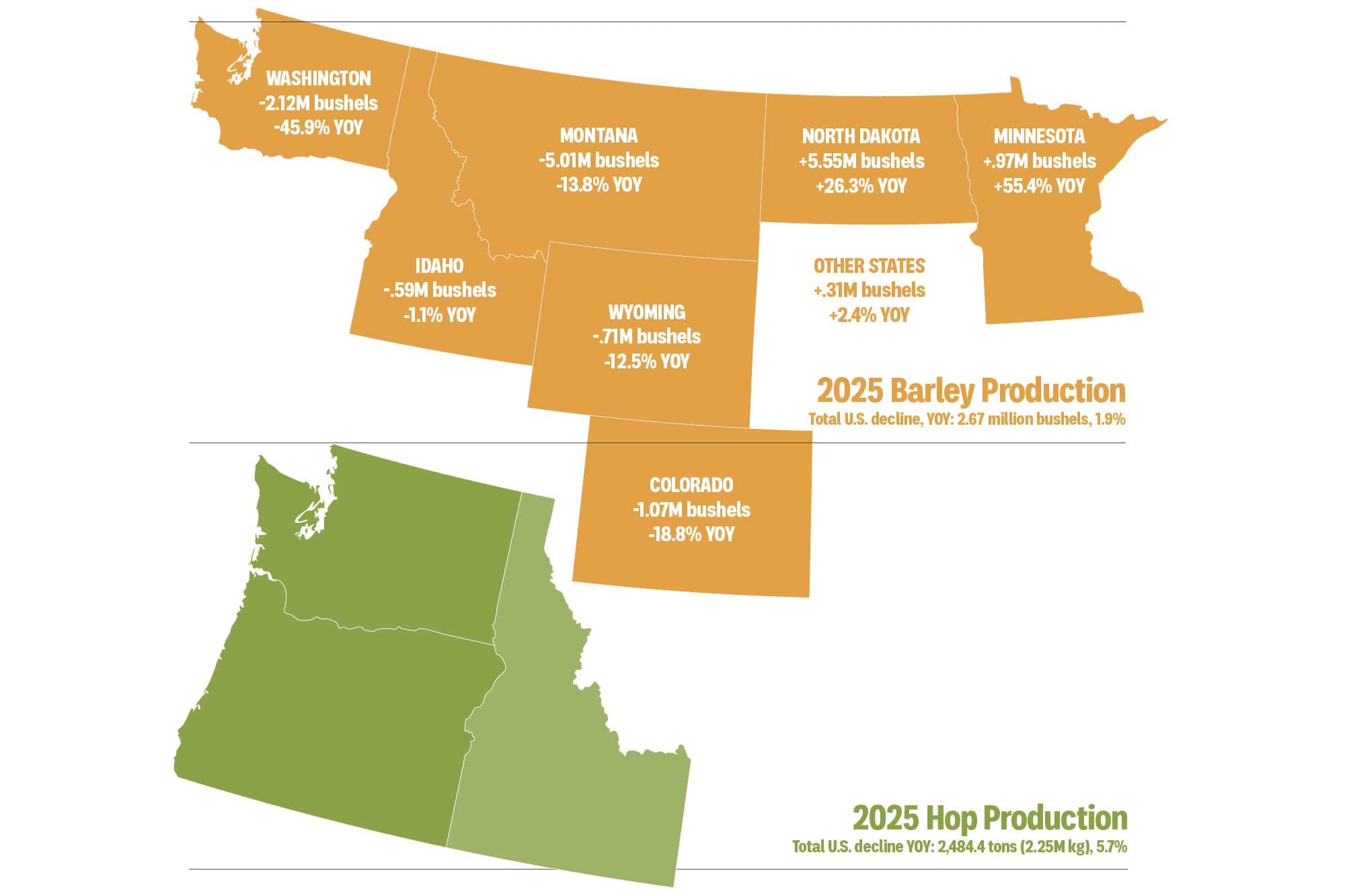
Infographic: Craft Beer’s Agricultural Reset
There’s no beer without the farmers who grow its ingredients, and there’s no sugar-coating the impact of beer’s current pullback on what they need from those farms. Here we map the year-over-year changes in barley and hop production based on data from the USDA.


















